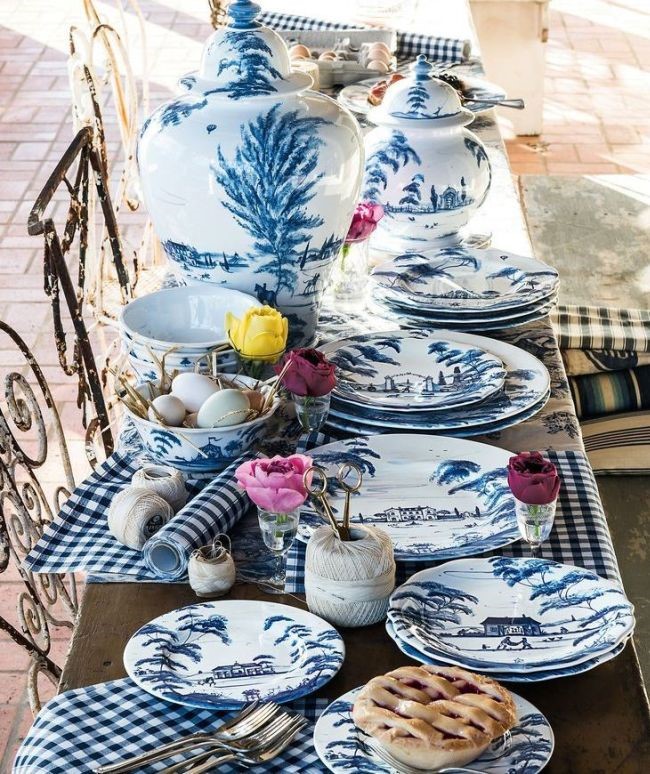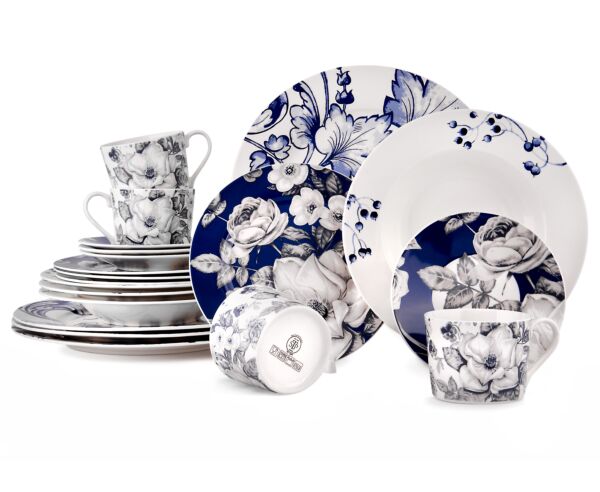Bestsellers
The Europe`s largest porcelain production center was in Meissen town, Germany. This city founded the first porcelain mass production in Europe. In Britain, a silver tea set appeared at the beginning of the 18th century. The tradition to drink tea at a specific time in the afternoon, surrounded by friends and family, became popular when Queen Anne spread it among the British aristocrats. Beautiful porcelain cups were considered a symbol of prosperity.

Britain did not have that many fashion tendencies. There were only a few popular designs of the coffee and tea sets that were recognized as fashionable at that time. In 1784, Duke de La Rochefoucauld said that the tea party ritual provides the wealthy people to have “the opportunity to show their greatness with the help of teapots, cups and other items that are always elegant.”
In the mid-18th century, it was possible to order tea and coffee sets from catalogs. You could order a single item or a full tableware set. The complete sets of the Worcester porcelain included 43 pieces. There was also a table ware for one person. It was called Egoist and was extremely popular among bachelors. In the late XVIII the Wedgwood porcelain tea sets were considered very elegant. They had a minimalistic designs and only couple floristic of animalistic designs.
In the Russian Empire, tea sets were manufactured by all of the leading porcelain factories, including Imperial Porcelain Factory, Gardner factory in Verbilki, Dulevo Porcelain Factory, Gzhel Porcelain Factory and others. The plants drew their inspiration from the Russian folk traditions and many European trends. In the XVIII century Chinoiserie, the Chinese style became very popular. During the period of the Napoleonic Wars (1803-1815) the fashion changed. At the beginning of the 19th century, after Napoleon's campaign in Egypt, Egyptian motifs became very popular. There was also the trend for drawing portraits of the ruling monarchs and military leaders and depicting scenes of the battles of the Napoleonic wars. Landscapes were considered very popular decorating motifs. Craftsmen also loved to depict the scenes of Greek and Roman mythology on the snow-white porcelain surface. There was a tradition that a whole tea or coffee set had to be designed in a general style and had to be dedicated to the same theme. However, the specific image on each subject could be unique. For example every cup from the set could have different pictures.
In the Soviet times, the porcelain industry of Russia was nationalized. At first, in the era of the NEP (New Economic Policy), porcelain factories often worked with old, pre-revolutionary ideas and trends. However, new experimental porcelain items were also created, known as Propaganda Porcelain. After that, the factories received the state order to mass-produce those items. Numerous picture templates were created. Many Soviet porcelain artists (for example, famous P. Leonov and E. Zeizel) created numerous elaborate and practical tea set designs. E. Zeizel created the word famous C-1 tea set. The Beauty tea set, designed by P. Leonov, won the Grand Prize during the World Exposition in Paris in 1937.
In the modern Russia tea sets are manufactured at several porcelain plants. The pre-revolutionary and Soviet designs are still present in the modern works today. However, many new designer ideas appeared as well.

How to choose the tea or coffee set?
The tea or coffee sets have to create a cozy and warm atmosphere in your home. You have to choose your table ware attentively if you want it to match both your interior and your mood.
When deciding which tableware set to buy, you have to pay attention to several factors:
- The number of dishes ware in the set is important. A classic tea set is designed for six people, but usually sets are made for two or more people. Traditionally, a tea set consists of cups, teapot, saucers, sugar bowl, milk jug and dessert plates.
- The material from which a particular set is made matters a lot. It is considered that porcelain is suitable for serving a regular family dinner. Moreover, porcelain tea tableware is also perfect for a festive table. Bone china, other types of porcelainm and glass are considered the best materials for serving the table.
- It is very important to understand what design you need. You have to choose a color, shape and ornament that will be combined with the interior of the kitchen and the rest of the tableware. There are many types of ornaments, among which you can choose floral, geometric, animalistic, zoomorphic (image of ordinary or fantastic animals), anthropomorphic (human figures and body parts) and other designs.
- Choose high-quality porcelain. Russian Imperial Porcelain stands in one line with the world-famous porcelain brands, such as Belgian BergHOFF and German Villeroy & Boch. In St-Petersburg Global Trade House you can find a great variety of different Imperial Porcelain items. All of them are hand-painted, have an authentic Russian, modern and trendy design. Add more luxury to your house!
- Pay attention to the shapes of cups and teapot. When choosing a tea set, you should also pay attention to the shape of the kitchen utensils. The shapes of the tableware items can be classic, round or oval with rounded edges. The tea tableware set you buy should match the forms of the rest of your tableware.




















